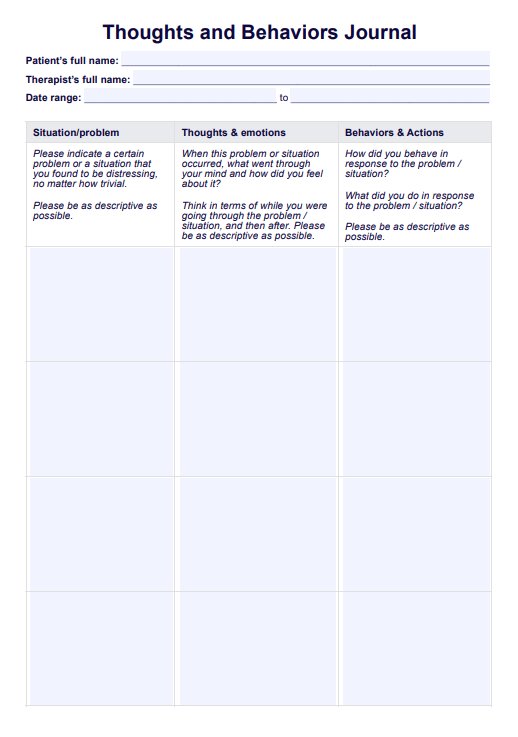Ideally, every day between each CBT session. This should be issued on the first session and completed by the third so that the rest of the program can focus on teaching them skills and addressing their problems. Make sure to have them write on it after they’ve gone through a distressing situation, no matter how trivial.

Thoughts and Behaviors Journal CBT Worksheet
If you’re a Cognitive Behavioral Therapist, we recommend you download this Thoughts and Behaviors Journal CBT Worksheet to identify your client’s thought and transform positive well-being. Foster effective change, and work towards reframing negative thoughts.
Thoughts and Behaviors Journal CBT Worksheet Template
Commonly asked questions
It shouldn’t be. The template that we have has guide questions to help nudge the clients. Whatever difficulty arises will be on the client’s willingness to open up and how they want to write about themselves.
It’s your therapy program, so it’s up to you if you believe this worksheet is useful or not. If you can get the client to talk in-depth about their problems, then you might not need this version of the worksheet. Or, you can use this worksheet and write down what the client tells you if they open up.
EHR and practice management software
Get started for free
*No credit card required
Free
$0/usd
Unlimited clients
Telehealth
1GB of storage
Client portal text
Automated billing and online payments











